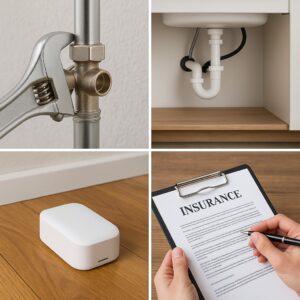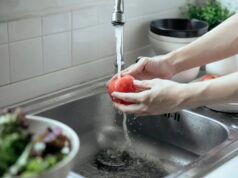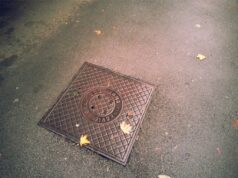Key Takeaways
- Proactive maintenance and fast response are essential for reducing water damage risks in any home.
- Most water-related issues can be avoided with regular inspections and attention to potential problem areas.
- Modern leak detection technology can alert homeowners to dangers early, minimizing repair work and costs.
- Understanding homeowners’ insurance and preparing the necessary documentation helps streamline any claims that may be needed.
- A long-term, layered prevention plan is crucial for safeguarding your home against unexpected weather events or flooding.

Recognizing The Scope Of Water Damage
Water damage is often underestimated until its consequences become painfully obvious. Even small leaks under sinks or in the walls can lead to weakened structures, ruined flooring, warped cabinetry, and hazardous mold that’s tough to get rid of. The inconvenience of unplanned repairs can displace families, create financial setbacks, and reduce property value. Incidents like burst pipes or leaking appliances commonly result in the need for water restoration Cincinnati illustrating how quickly a minor issue can escalate into a full-blown emergency.
Statistics show water damage is among the most frequent and costly reasons homeowners file insurance claims. A single inch of water inside a property can cause thousands of dollars in repairs and months of restoration work. Yet, so many homeowners only notice the warning signs after considerable harm has been done, such as musty odors, bubbling paint, or discoloration on ceilings and walls. Investing a small amount of time in routine vigilance and quick remediation saves not just money but also peace of mind, especially when these efforts are paired with support from restoration professionals.
Common Causes Of Water Intrusion
The entry points for water in a typical home are numerous and often overlooked until evidence of damage appears. Severe storms, improper roof installation, or failing gutters can allow rainwater to penetrate attic spaces and exterior walls, potentially causing harm. However, common household culprits such as aging water heaters, cracked supply hoses, and slow-draining sinks are just as likely to cause trouble as severe weather events. Basement seepage is another widespread concern, typically resulting from poor exterior drainage or insufficient waterproofing, which allows groundwater to infiltrate through the foundation.
- Leaky or damaged roofing and flashing around vents and chimneys
- Pipes are susceptible to freezing, especially in uninsulated areas
- Appliances past their recommended lifespan or lacking routine maintenance
- Poor backyard grading directs water back toward the foundation
- Plumbing failures hidden within walls or under floors
- Neglected regular cleaning of gutters and downspouts
Tracing the actual source can be challenging, as water often travels a considerable distance from the original incident before exhibiting visible symptoms. Homeowners benefit from understanding these varied risks and checking vulnerable spots each season.
Routine Maintenance To Stay Dry
Consistent home maintenance is the shield against most water damage events. Rather than waiting for disaster to strike, homeowners should take the initiative to inspect their properties on a set schedule. During biannual checks, examine not only obvious areas, such as the roof and gutters, but also less visible places, including under sinks, behind dishwashers, and around the base of toilets. Blocked or sagging gutters are common, especially after autumn leaves or heavy windstorms, and can force water to overflow against siding and windows.
- Test and run your sump pump before the rainy season; consider installing a battery backup system for severe storms.
- Inspect the caulking or weatherstripping around windows and doors for cracks that could allow water entry during a downpour.
- Replace aging supply hoses on appliances before they develop noticeable leaks, especially if you spot bulges or wear.
- Look for unexplained increases in your water bill, which may indicate a leak behind the walls.
- Clean debris from exterior drains and window wells to ensure proper water flow away from your foundation.
Addressing these items can protect your investment and shield you from the disruption and expense of unanticipated repairs.
Leveraging Technology To Prevent Leaks
The surge in smart home technology has enabled easier and more affordable water risk management. Homeowners now have access to a wide array of digital water leak detectors that continuously monitor for trouble and can be set up within minutes. Sensors positioned near potential leak sites silently monitor for unnatural moisture or water pooling. According to the U.S. News review of smart leak detectors, many of the best-rated devices send instant alerts to your phone, providing a real-time opportunity to intervene.
More advanced options even allow for remote control, such as shutting off your home’s main water valve from an app, which is particularly valuable if you travel often. For tech enthusiasts, integrating these systems with automated home hubs provides seamless oversight and peace of mind. Whether your home is modest or expansive, technology levels the playing field—everyone can intercept leaks before they spiral into crises.
Responding Quickly In An Emergency
Panicked moments are common during a water emergency, but taking swift, practical steps can significantly limit the fallout. The first priority is always safety—turn off the main water valve to prevent ongoing intrusion and unplug any exposed electronics to minimize the risk of electric shock.
- Act quickly to stop additional water from entering the area; if the source is appliance-based, unplug it immediately.
- Move electronics, heirlooms, and furniture out of wet areas as soon as possible.
- Bail out the pooled water using towels, mops, or a wet/dry shop vacuum.
- Ventilate the area by opening windows and doors, and deploy fans or dehumidifiers if available, to expedite the drying process.
- Photograph and document any visible damage to assist later with insurance submissions.
- Contact a professional restoration service for a full assessment and mold mitigation if water has crept into the drywall or flooring.
Time is absolutely critical—mold can form within 24 to 48 hours in damp conditions, increasing both health and repair risks. Quick thinking turns a chaotic day into a manageable inconvenience.
Understanding Insurance And Documentation
Most homeowners assume they’re fully protected, but not every water-related disaster qualifies for coverage. Policies differ on whether damage from slow leaks, backups, or “acts of God” is included. It’s a good idea to review your policy annually and clarify any areas of confusion with your provider.
Keep detailed records: digital photos of baseline home conditions, repair receipts, maintenance logs, and a copy of your insurance policy tucked somewhere dry and accessible. These steps make it far simpler to substantiate your claim, reducing friction and expediting the payout when stressful events strike.
Long-Term Strategies For Water Damage Prevention
Guarding your home against water damage is not just about reacting to emergencies—it’s a lifelong commitment. For homes in areas with frequent heavy rains or older neighborhoods with aging infrastructure, upgrading to water-resistant materials in key areas, such as tiled lower levels or waterproofed basements, builds resilience.
Beyond the house itself, strategic landscaping matters. Sloping the yard so water flows away from your foundation and keeping storm drains clear of debris are simple yet overlooked tools. Municipal programs often subsidize upgrades, such as sump pumps or backflow preventers, which are particularly crucial in flood-prone communities. Taking a comprehensive approach transforms small tasks into a robust shield for your investment.
Staying Informed And Connected
Being connected to helpful, updated information is part of ongoing prevention. The National Fire Protection Association provides a range of guidance on home safety, reminding homeowners that knowledge truly is power. Subscribing to local alerts and participating in neighborhood watch groups provides access to real-time news about hazards, trends, or new community programs aimed at combating water threats.
Exchanging stories with others who have navigated water-related incidents can prepare you both psychologically and practically for emergencies, highlighting effective measures and common pitfalls to avoid.
Final Thoughts: A Proactive Approach Pays Off
Safeguarding your home from water damage is a multifaceted effort—one that pays off exponentially. A mix of regular inspections, smart technology investment, strong insurance knowledge, and community engagement will leave any homeowner better prepared for life’s surprises. Home is more than just a building; it’s a safe haven, made all the more secure with a careful, proactive water damage prevention plan.








